Immerse yourself in Burgos's vibrant flavors and uncover hidden culinary gems with our expert insider guides. Plan an unforgettable trip today!
Read more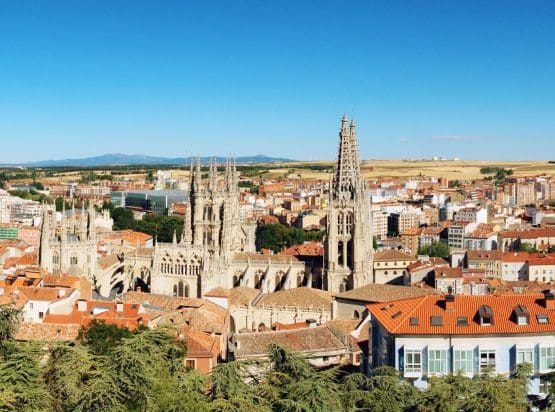
EXPLORE ALL OUR CASTILLA Y LEON WINE REGIONS GUIDE
Last updated: August 14, 2024
Spain’s most opulent and intense red wines are made in the broad valley of the Duero River and its tributaries. Vega Sicilia provided the initial proof that very fine wine could be produced in this corner of Castilla y Leon, planting Bordeaux varieties in the 1860s. The resulting wine was a world apart from Rioja: deeply colored and powerfully structured.
Yet until the late 20th century, few oenophiles were minded to give Ribera a second glance. That all changed in 1975 after Alejandro Fernandez electrified the market with his first vintage of Pesquera. This powerful and penetrating expression of Tempranillo greatly impressed US wine critic Robert Parker and fame inevitably followed. In 1982, the Alvarez family purchased Vega Sicilia, and, as fortune would have it, the zone was awarded DO status that same year. Back then, there were just 24 estates in the wine-growing business; today, over 300 firms are now producing Tempranillo wines of intense aroma, color, and flavor. Here, in the old stomping ground of El Cid, you’ll discover some of Spain’s most memorable bottles.
Discover more about Spanish Wine
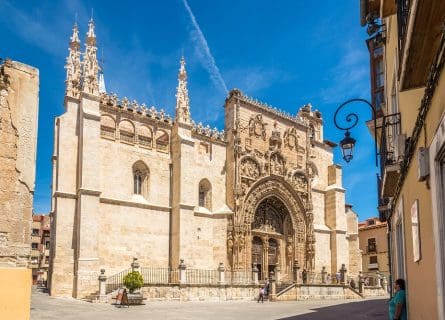
Wine has been made in Castilla y Leon since the Roman era, although it only became widespread with the arrival of the monasteries – a story repeated worldwide! But even the modern face of Ribera del Duero is unspoiled: a rural region with vast swathes of vineyards between each town. Indeed, it is a wonderful destination to visit, not least because of the many pretty villages that dot the landscape.
For centuries, winemaking has centered upon the villages of Peñafiel, Roa, Aranda de Duero, and San Esteban de Gormaz, which all sit along the river Duero banks. In addition, the area straddles four historic Spanish provinces: Burgos, Segovia, Soria, and Valladolid. And so there is no paucity of ancient monuments, including medieval cathedrals, Roman-era constructions, fortresses, and castles (Castillo translates as castle in Spanish, a reference to the numerous fortifications built during the Reconquista).
The Romans controlled the Iberian Peninsula for centuries, yielding power to the Visigoths after the Western Empire imploded in the 5th century. Yet their reign was extremely short-lived, crushed by the superior forces of the Moors who invaded Andalucia in 711. This alliance of Arab and Berber armies from North Africa held onto their vast prize (northern Spain was never fully conquered) for over three centuries.
In the early Middle Ages, Al Andalus was celebrated for its significant achievements in science, architecture, and astronomy, and it was responsible for introducing the astrolabe and water wheel to Spain.
Nevertheless, Christian forces started to regroup in the 9th century; the arid plains of old Castile were a major base of operations for the Catholic armies. By the 13th century, the region had been liberated, and the Moors established their final stronghold in Granada. In 1469, the marriage of Isabel of Castile and Fernando of Aragon paved the way for a modern Spanish state, absorbing the kingdom of Navarra in 1512.
The Evolution of Viticulture
In the 1500s, a great deal of wealth flowed into the coffers of the Spanish state. Much of this was generated by Spain’s colonies in the New World, although the lucrative wool trade was an important part of the Spanish economy. However, although viticulture has a long history in Ribera del Duero, a great deal of land was, until quite recently, given over to cereals and sugar beet.
The visionary Eloy Lecanda started Ribera on the path toward greatness, planting vines at Vega Sicilia after he inherited the property in 1859. Using imported vine cuttings from France – including Cabernet Sauvignon, Carmenere, Petit Verdot, and Malbec – Lecanda crafted a wine of astonishing, penetrating personality. After that, it changed hands several times until the Alvarez family assumed control in 1982.
Ribera started to become fashionable in the 1990s: although there were fewer than 24 bodegas, men like Peter Sisseck were making waves in the US with a new breed of super-concentrated and robust Spanish reds. His signature label, Pingus, remains incredibly popular in the country, as do many of the newer faces in the zone.
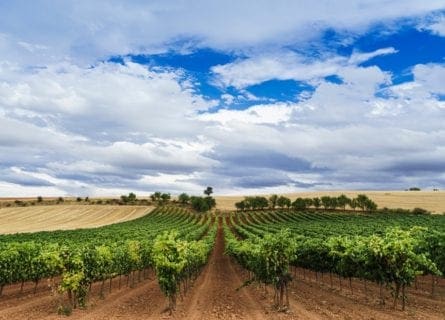
Located in Castilla y Leon, halfway between Bilbao and Madrid, Ribera del Duero is a vast wine region with Crusader castles and mile after mile of vineyards. The area of production, heavily expanded since the 1980s, extends approximately 117km between Valladolid in the west and Soria in the east. It follows the Duero River course, which has deposited sediment and clayey sand on the vineyards over the millennia.
The Golden Mile
The most cherished vineyards are situated in the Milla de Oro, or Golden Mile, a short strip of land hugging the Duero River (which runs west toward Portugal, slicing through the Spanish wine regions of Toro and Rueda before becoming the Douro and nourishing Portugal’s Douro region). The crème de la crème is a triangle of land encompassing the villages of La Horra (home of Pingus), Roa de Duero, and Pedrosa del Duero. Old bush vines deliver tiny yields of remarkably concentrated and lively berries in these exalted parcels.
The climate, however, is fiercely continental. Indeed, the baking hot summers and cold winters that define life in Ribera del Duero are not for the faint-hearted. As incredible as this sounds, it can climb above 40°C in July, yet the vines can be covered in spring frosts in early May—the reason for this significant variation in altitude.
Rising to 850 meters above sea level, vineyard elevation is a vital part of the local quality equation in the Duero, helping to preserve freshness and acidity in the wines. Despite the summer heat, the light and air here have a high-altitude dryness and brightness about them, as do the spectacular wines.
Fascinating Soils
Ribera del Duero’s soils are a subject of endless fascination. It is not uncommon, for example, to find different types of soil in the same vineyard: wildly varying ripening times can be a massive problem in some climats (vineyard sites). Limestone terroir is prevalent in vineyards planted north of the river, while sand and clay/loamy soils are found elsewhere. Both clay and limestone are water-retentive – a godsend in very dry vintages.
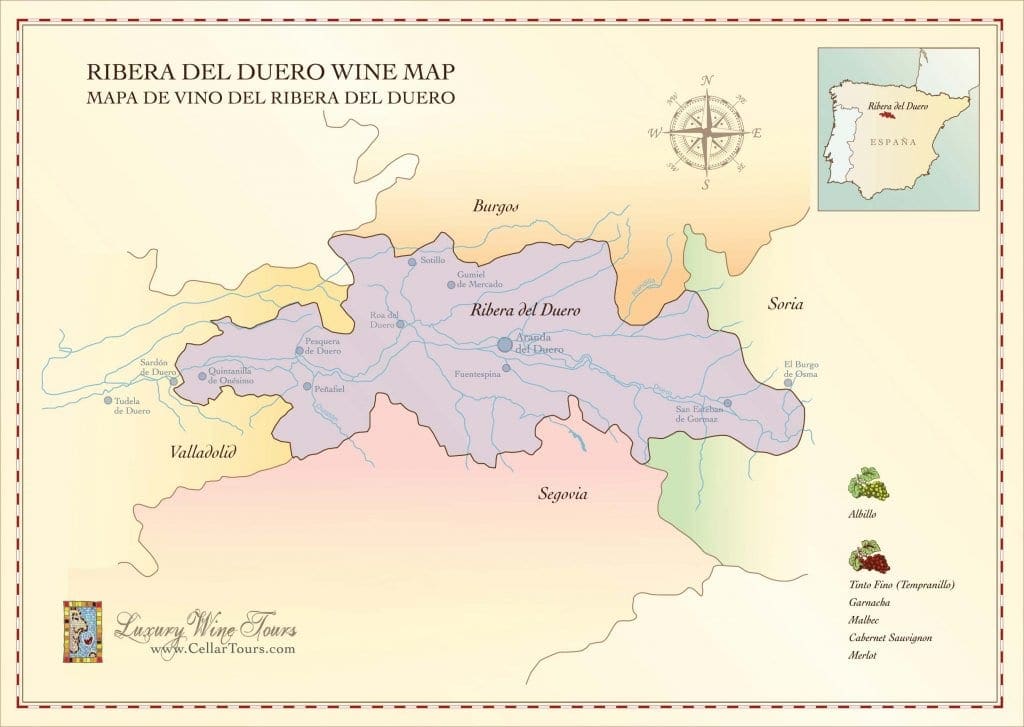
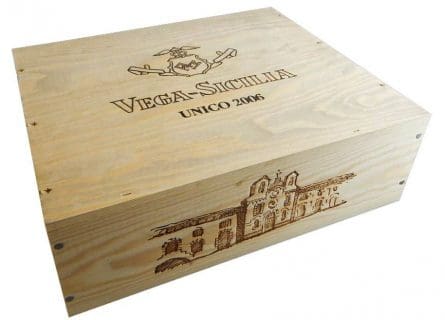
If you’re searching for bold reds, look no further. Ribera del Duero answers the call with aromatic Tinto Fino wines that seduce with intensity and balance. Minuscule quantities of Cabernet Sauvignon, Syrah, Garnacha, Malbec, and Merlot are also grown, although these varieties are used almost exclusively for blending. Above all, you can expect a top Ribera del Duero to be structured with a good body and powerful fruit flavors that rub shoulders with none-too-subtle woody notes.
Yet approaches to winemaking – especially maturation – are far from uniform in the DO. Vega Sicilia, a grand estate of 250 hectares, used to age its prestige label Unico for over ten years, creating a spellbinding red that nonetheless wore its oaky flavors on its sleeve. However, tastes have changed in recent years, so the maturation period has been shortened to allow the fruit and oak to have equal billing.
Modern Maturation Practices
Today, most bodegas age their wines for about 12-14 months, subjecting the Tempranillo grapes to a lengthy maceration to extract high levels of flavor, color, and tannin. Occasionally, a small percentage of the white grape Albillo is blended into the wines to enhance the bouquet. Peter Sisseck advocates the Albillo grape, arguing that it has a key role in the region’s wines. Other winemakers, however, are not convinced. In addition, as elsewhere, an ongoing flirtation with tinajas (small clay jars) and amphorae is happening in Ribera.
Classification Hierarchy
The tradition of buying grapes is just as strong here as in Rioja: some wineries do not own any vines outright, instead contracting with trusted growers. Once the wines are made, a strictly regulated classification framework can be used on labels, with Crianza, Reserva, and Gran Reserva wines priced in ascending order.
Crianzas are aged in oak for at least six months; Reserva wines are matured in wood for at least one year. Gran Reservas are kept in the cellars for five years before commercial release. However, it should be noted that Pingus and Vega Sicilia do not entangle themselves in the classification hierarchy. For them, brand power is king.
Ribera del Duero operates in an increasingly competitive arena. Its historic USP – concentrated wines that simultaneously offer bright acidity – is now being challenged by the exceptional wines of Toro, Cigales, and modern Rioja. Yet Ribera has maintained its position at the head of the pack. It is one of Spain’s greatest innovators, refusing to rest on its laurels in a rapidly changing world.
This willingness to adapt can be seen across the region, affecting winemaking and viticulture. Again, Peter Sisseck has led the charge: he spearheaded a major vineyard project ten years ago, which involved a lengthy study of the greatest potential sites in the region.
Once these were identified, Sisseck paid a premium for the growers’ fruit in return for their adherence to strict principles of lower yields, meticulous vineyard management, and conversion to organic viticulture. As a result, these wines are marketed under the ‘Psi’ brand – one of the best-value reds produced in the DO today.
The Shift Toward a Lighter, More Elegant Style
There has also been a discernible shift from the brute force in recent years as winegrowers ease up on the extraction and new oak.
Jancis Robinson MW is one such proponent of this gentler approach, explaining in a recent article that:
“For many years, I tended to steer clear of wines from Ribera del Duero, apart from those from the most venerable producer, Vega Sicilia. The prevailing fashion then was for high-alcohol, chewy, oaky wines, and this — plus producers’ desire to disguise less-than-wonderful fruit — resulted in far too many Ribera del Duero wines being aged in new, heavily toasted, often poorly seasoned oak.”
However, almost every quality-focused bodega has abandoned this paradigm, as consumers demand lighter reds that showcase freshness and a sense of place.
Wine writer Simon Field MW agrees:
“The model of super-extraction and lavish new French oak for its own sake is looking increasingly outdated. The best examples from Ribera have subtlety, depth and linear acidity. More wines of this style will guarantee ongoing success and ensure that there is no implosion into an abyss of over-oaked caricatures.”
And so, with continued innovation and nurturing of the region’s old vines, Ribera’s star looks set to shine brighter as more and more oenophiles discover these venerable reds.
As a footnote, we should add that not every memorable bottle is produced within the official boundaries of the DO. For example, Abadia Retuerta, a sizable estate founded in 1996 by Swiss company Novartis, is just outside the official boundary demarcated in 1982. Even further west, in Tudela, is Mauro, founded in 1980 by ex-Vega Sicilia winemaker Mariano Garcia. They both produce stunning wines.
Exploring Albillo: Spain's Versatile Wine Grape in Ribera del Duero, Madrid, and Galicia. Uncover the Diversity of this Remarkable Varietal.
Find out moreSavor the Essence of Albariño: Northwest Spain's Delightful White Grape for Seafood Pairings. Explore the Lightness and High Acidity of this Galician Gem.
Find out moreDiscover the irresistible allure of Cabernet Sauvignon—a worldwide favorite with robust, dark-bodied flavor. Unleash your wine journey today!
Find out moreGarnacha: Spain's Red Gem. Akin to Pinot Noir, it bridges terroir and winemaking, crafting captivating expressions.
Find out moreDelve into Malbec, a dark, small grape native to France, cherished for its thick skin and exceptional flavors. 🍇🍷
Find out moreMerlot is the most cultivated grape in Bordeaux and closely related to Cabernet Franc
Find out moreDiscover Tempranillo: Spain's iconic red grape. From Ribera del Duero to Toro, it yields concentrated wines. Explore its synonyms and unleash its prowess.
Find out moreGreat food and stupendous wine go hand-in-hand in Ribera del Duero, where every meal explores this beguiling region’s ancient food culture. In almost every village restaurant, you will find hearty countryside cuisine; central Spain is famous for rich pork dishes and delicious cured Spanish jamon, flavorful sheep cheeses, roasted lamb, and wonderful stews. Fish does not generally feature heavily, although the best restaurants of Valladolid and Aranda del Duero will have some enticing choices from the Atlantic.

Immerse yourself in Burgos's vibrant flavors and uncover hidden culinary gems with our expert insider guides. Plan an unforgettable trip today!
Read more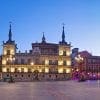
Immerse yourself in León's vibrant flavors and uncover hidden culinary gems with our expert insider guides. Plan an unforgettable trip today!
Read more
Immerse yourself in Segovia's vibrant flavors and uncover hidden culinary gems with our expert insider guides. Plan an unforgettable trip today!
Read moreIf you would like us to customize an exclusive luxury tour, contact us and let us know your travel plans. We offer luxury food and wine tours for private groups of a minimum two guests. In addition, all of our private, chauffeured tours are available year-round upon request.

